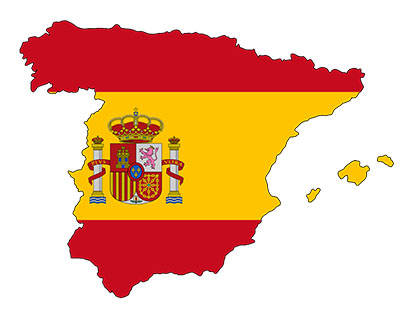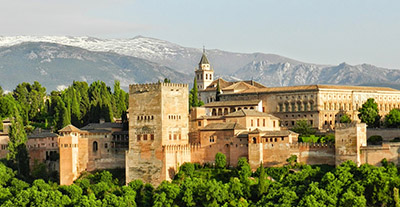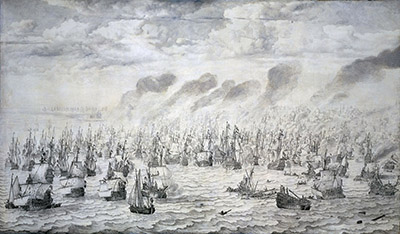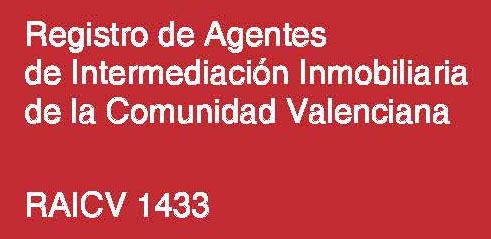Spain-Infos October: A brief history of the Kingdom
My newsletter is coming to you a little later than usual this time, because last week we had two public holidays at the same time, of which 12 October was the most important:
The 'Dia de la Hispanidad' is not only the country's public holiday, it's also celebrated in many other Spanish-speaking countries. It is the day on which Christopher Columbus discovered America. In Madrid, Spain's capital, the day is celebrated with a huge military parade, in which the royal family also takes part.
To mark the occasion, here's a little history of the country today!
The Kingdom of Spain "Reino de España" is not limited to the Iberian Peninsula: the national territory also includes the Canary Islands, the Balearic Islands and the cities of Ceuta and Melilla, on the North African border.

(Picture from Elias on Pixabay)
With a population of 47 million, Spain is about twice the size of the United Kingdom and one of the most sparsely populated countries in Europe.
The capital, Madrid, is one of the highest cities in Europe and the second largest in the EU.
Spain is divided into 17 autonomous regions.
The country is a parliamentary monarchy. The king is the head of state and appoints the prime minister after receiving a vote of confidence from parliament.
The Iberian Peninsula owes its name to its original inhabitants, the Basques and Iberians. In the 11th century BC, the Phoenicians settled on the southern coast. They called this land "Hispania", which in their language meant "coast of the sheep" (the Phoenicians thought they were very different animals, namely rabbits).
The Moors occupied Spain in 711 AD and ruled Andalusia until 1492. Arab domination was strongly reflected in the language and architecture and left a particular mark on the country.

(Picture from Pablo Valerio on Pixabay)
The expulsion of the Moors from the Iberian Peninsula and the discovery of America by Christopher Columbus in 1492 marked the beginning of Spain's rise to world power.
That year, the Moors lost their last stronghold, Granada. In the small town of Tordesillas, the Spanish and Portuguese shared the world under the supervision of Pope Alexander.
The following decades were marked by conflicts with France, the Netherlands and the Ottoman Empire. England was also involved: the Spanish Armada, supposedly unsinkable, was sunk by the English in a legendary naval battle in 1589.

(Picture from Wikilmages on Pixabay)
Nevertheless, these wars and the founding of colonies all over the world (in South America, for example) brought the country supremacy in Europe and a great deal of wealth.
In 1808, Napoleon conquered Spain, but was overthrown by the former King of Spain after just six years.
The 19th century was marked by political instability and regular coups d'état. The result was a parliamentary democracy that lasted until 1923. Until a man named Primo de Rivera staged a coup d'état. His aims: control of the army and parliament, stimulation of the economy and deep-rooted nationalism.
However, the (global) economic recession of the late 1920s intensified popular discontent and Primo de Rivera resigned in 1930.
A Second Republic was established in 1931 and, after some important social reforms, looked promising for the time being.
Until 1936, when Franco led a group of nationalists and launched a civil war against what he saw as "Red Spain". Thanks to nationalist and Christian propaganda and the support of Nazi Germany and Fascist Italy, Franco became the leader of Spain in 1939.
It was not until 1975, after Franco's death, that Spain's royal heir, Juan Carlos I, was able to ascend the throne. Together with his prime minister Adolfo Suárez (after whom Madrid airport is now named), he began a transition to democracy, culminating in a new constitution in 1978.

(Picture from Jean-Claude Decuyper on Pixabay)
Today, the Spanish monarchy is represented by King Felipe VI, Queen Letizia and their daughters Leonor, Princess of Asturias, and the Infanta Sofía, who, however, do not live in the royal palace shown above - Palacio Real de Madrid - but in the Zarzuela Palace northwest of Madrid.
I hope this little excursion into Spanish history hasn't bored you. Nevertheless if it has, chalk it up to my journalistic past and print it out for your children and grandchildren ![]() .
.
Now, for good measure, there's less text, but colourful images and stunning properties. Of course, you'll find plenty more on our website www.sucasita.eu.
And if you have any general questions about buying a property in Spain, or if you just want some information without any obligation, pease do not hesitate to contact us at any time!
Kind regards,
Jan Hannemann and the Su Casita team



